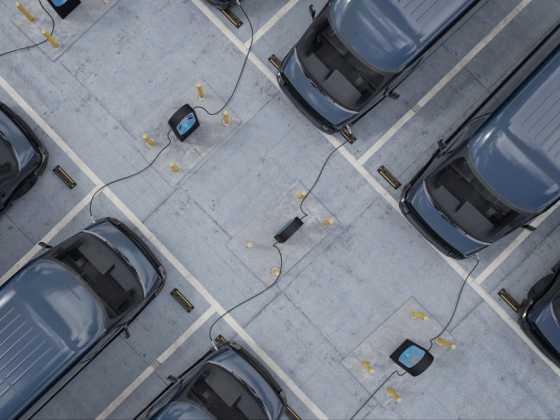Beginning your EV transition

Most fleet managers now realise that they need to begin to transition to EVs and, as with the beginning of any major change, the few first steps can seem daunting. However, breaking the task down into simple actions can make it much easier, writes Paul Hollick, chair of the Association of Fleet Professionals
Many company car drivers now wish to transition to an EV at renewal time because of the tax and environmental advantages. Electrifying your fleet in this way is haphazard though, and it is much better to take a structured approach.
Firstly, start by examining travel patterns to identify suitable EV candidates. Initially, concentrate on those covering low miles, making lots of short trips or who never do more than 150 miles in any single journey. However, you could have high mileage drivers that never cover more than 150 miles per day and these might also be potential EV users.
Look for suitable EV alternatives to established petrol and diesel models across all grades of your choice list.
Always use a whole life cost (WLC) methodology when assessing the financial impact of adopting EVs on the business. Never use capital cost or purchase price, which will deliver an unrealistic picture and be weighted against electric vehicles.
In terms of the WLC calculation, remember also to include costs such as London Congestion Charge or similar if the vehicles are regularly travelling within Clean Air Zones. Also, reflect any additional charging costs if the employee does not have access to a home charge point
Review your leasing contract renewal dates. Some vehicles may be worth terminating early because of the current low EV taxation situation.
Issue a driver survey to assess the likely take-up of EVs plus any potential issues. Include within this factors such as the benefits of low benefit in kind tax and fuel costs but also be realistic about the potential range of vehicles.
Interview drivers who want to adopt an EV to check that they have off-road parking where a charger can be fitted or they can access charging at work. Ask them if they are happy to charge as part of their daily routine and can explain how using an EV will fit into their work routine and typical journey profile. Work with drivers that are early adopters within your fleet to become EV advocates and drive internal engagement.
Your commercial vehicle fleet
At this point in time, electrifying your van fleet is likely to prove trickier than for cars. Generally, electric van range is markedly lower and adversely affected by payload, which will tend to be reduced compared to diesel vehicles. However, as with cars, adopting a clear methodology will enable you to target early wins.
When assessing candidates for electrification, look at vans covering low miles, lots of short trips or those that are never driven more than 120 miles per day. As with cars, it is possible that higher mileage vehicles can be replaced by an EV as long as they require limited range day-to-day.
Identify vans used on urban based drive cycles as this is where the benefit will be greatest, according to the experience of AFP fleet managers.
Investigate the availability of the right types of vehicle for electrification. While there are many fewer electric van choices than cars, new models are appearing on an almost weekly basis, so keep on top of the latest news.
Examine the potential for scenarios where charging is carried out at work, as part of normal journey patterns or at home, and develop an understanding of how this will affect van use from an operational point of view, as well as the charging costs involved.
If employees will be required to charge their electric van at home, the company should expect to cover the costs of a charger. The AER rate for power used will not generally cover the employee’s domestic energy costs, so you may well need to reimburse on an actual cost basis.
Issue communications to inform drivers that EVs are coming and highlight the positives for them and for the business.
Workplace charging
Workplace charging is a key part of your EV transition but perhaps the one that that is most open to interpretation and the individual needs of each organisation. These are some points to consider.
How committed is your company to workplace charging? Will you install a few chargers to start with or go large scale straight away?
Where can the workplace charge points be sited and does this affect the viability of current parking spaces? How easy is installation both in terms of power and equipment, and the ownership of your site?
Who can use the workplace chargers and how? Are they open to all employees, just those with company vehicles or those doing business mileage?
Will the company charge for their use or are they free? If there is a fee, is it a perk or will a fixed usage rate by levied?
What rules will be put in place regarding charging if there are only a few chargers? How is this going to be monitored and controlled?
If charging commercial vehicles, especially with long wheel bases, are the parking bays big enough? L
The pointers here are taken from the AFP’s “Assessing Suitability for EVs” guide.
The AFP’s EV hub, sponsored by Nissan, also contains advice on many aspects of EV fleet management.






